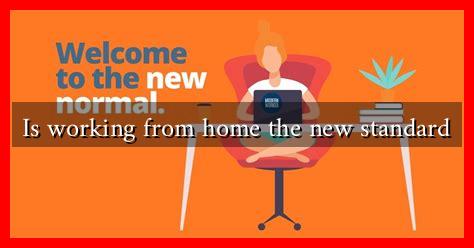-
Table of Contents
Is Working from Home the New Standard?
The COVID-19 pandemic has dramatically reshaped the way we work, with remote work becoming a necessity for many organizations. As we transition into a post-pandemic world, the question arises: is working from home the new standard? This article explores the evolution of remote work, its benefits and challenges, and what the future may hold for this increasingly popular work arrangement.
The Rise of Remote Work
Before the pandemic, remote work was already on the rise, but it was often limited to specific industries or roles. According to a report by FlexJobs, remote work grew by 159% between 2005 and 2017. However, the pandemic accelerated this trend, forcing companies to adapt quickly to a remote work model. A survey by Gartner found that 88% of organizations encouraged or required employees to work from home during the pandemic.
Benefits of Working from Home
Working from home offers numerous advantages for both employees and employers. Here are some key benefits:
- Increased Flexibility: Employees can create their own schedules, allowing for a better work-life balance.
- Cost Savings: Both employees and employers can save money on commuting, office space, and other overhead costs.
- Access to a Global Talent Pool: Companies can hire talent from anywhere in the world, increasing diversity and expertise.
- Improved Productivity: Many employees report being more productive when working from home due to fewer distractions and a personalized work environment.
Challenges of Remote Work
Despite its benefits, remote work also presents several challenges that organizations must address:
- Communication Barriers: Remote work can lead to misunderstandings and a lack of collaboration if communication tools are not effectively utilized.
- Isolation: Employees may feel lonely or disconnected from their colleagues, which can impact morale and mental health.
- Work-Life Boundaries: The blurring of lines between work and personal life can lead to burnout if not managed properly.
- Technology Dependence: Remote work relies heavily on technology, which can be a barrier for some employees and may lead to technical issues.
Case Studies: Companies Embracing Remote Work
Several companies have successfully adopted remote work policies, setting examples for others to follow:
- Twitter: The social media giant announced that employees could work from home indefinitely if they choose to do so, emphasizing trust and flexibility.
- Shopify: The e-commerce platform declared itself a “digital by default” company, allowing employees to work remotely and focusing on results rather than hours worked.
- Microsoft: The tech giant has implemented a hybrid work model, allowing employees to choose how often they want to work from home or the office.
The Future of Work: Hybrid Models
As organizations evaluate their remote work policies, many are leaning towards hybrid models that combine remote and in-office work. A study by McKinsey found that 52% of employees prefer a hybrid work model, where they can split their time between home and the office. This approach offers the best of both worlds, allowing for flexibility while maintaining some level of in-person collaboration.
Conclusion: A New Standard?
In conclusion, working from home has become a viable and often preferred option for many employees and employers alike. While it presents unique challenges, the benefits of increased flexibility, cost savings, and access to a global talent pool are compelling reasons for organizations to consider making remote work a permanent option. As we move forward, hybrid work models may emerge as the new standard, balancing the needs of employees with the goals of organizations. The future of work is evolving, and those who adapt will thrive in this new landscape.
For more insights on remote work trends, you can visit FlexJobs.

